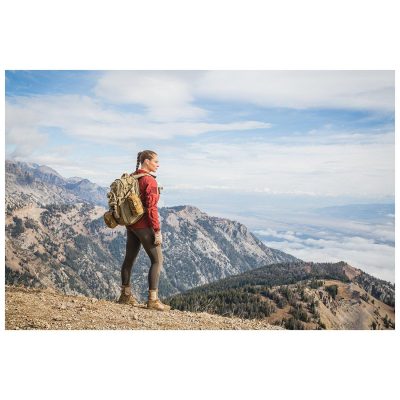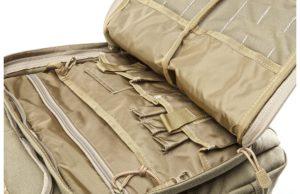
When we are putting together a first aid kit, there is nothing more important than thinking of the most likely items we would need to treat serious injuries. To do that, we have spoken to a number of first responders about what they would keep in their first aid kits for everyday use.
Sure, you can buy a first aid kit online, but chances are these are not going to treat anything more than a minor graze or a small cut. For those making a bug out bag, survival kit, or something for everyday carry, you’re going to be needing a first aid kit with the purpose of keeping you alive and treating serious injuries.
For first responders from medical, law enforcement or military-based backgrounds, having the right skills and equipment to deliver an effective treatment is crucial. It is why every military person receives basic training in first aid, so that prior to a victim reaching a hospital or a medical establishment, they are able to treat someone in the golden hour of medical assistance.
The Type of Bag You Should Be Using
When designing the pack, you’re going to want to chose a pack that has about five different sections. You can colour code these

Your first necessity is the bleeds kit. This is to stop bleeding and is one of the first things you should be doing in any gunshot or mass bleeding injury. The bleeds kit is to primarily stop bleeding so this should be carried in most accessible part of the bag.
How Much Should You Be Carrying in Your First Aid Kit?
Before talking about the gear you actually need in a first aid kit, you should be thinking about the size of what you are after. Essentially, you don’t want an ‘everything possibly treatable’ kit when you’re prepping your bug out bag for when the SHTF. Why? Because while having the right gear is crucial, having a light bag is just as important.
Instead, you are going to need a kit that basically stops you from dying. Wherever your bug out location is, or whether you are holding up in your home you can treat your minor injuries there, but if a family member or someone near you has been shot, has a large open wound or some other life-threatening injury, this is what you need to prepare for.
Of course, if you are going out on a camping weekend with the family, a generalist first aid kit is going to be necessary just to treat those casual cuts, grazes and rashes that might happen when you’re outdoors.
In the past, The Prepping Guide has looked at a special forces medic would carry in a combat zone, however, that is a much heavier and complete medic bag essentially turning them into a mobile operating theatre. For the essentials, we need something smaller.
For the purpose of this list, we are really only looking at that stuff that will save your life and that doesn’t pose too much of an impact on space in the bug out or everyday carry bag. We are going to be stocking items that cater for four common issues:
- Bleeding
- Infection
- Allergic reactions
- Pre-existing illnesses
1. First Aid Supplies to Stop Bleeding
Serious bleeding will kill you. It’s a basic knowledge that in any major injury applying pressure and stopping the bleeding is essential to stop the effect of a victim from going into shock.
Gloves
One of the first things you should be doing, when it comes to bleeding, is to take care of yourself. I say this because the easiest, lightest and quickest thing to apply in any situation is a pair of medical gloves. These are just simple non-latex medical grade gloves that are there to stop contact between yourself and the patient’s blood, which works both ways against infection.
Quickclot Gauze
Quickclotting gauze is a must-have for large unstoppable bleeds as they use a clotting agent to slow and stop excessive bleeds.
Aside from the good recommendations of quick clot, the one problem that can happen is that it only works up to a certain point. Using something like Alum can last forever.
Gauze of different sizes
You can make a lot of these just by cutting up much larger gauze. These would be for smaller wounds to larger thicker amounts to stop rapid bleeds along with the quickclot gauze.
Medical Tape
A strong medical tape is a really essential part to a kit as it will always help to hold gauze or bandages in place on a wound. Some responders also use duct tape as it rips less easily than medical tape and has a much stronger hold to the body. With duct tape you are more easily capable of splinting a solid stick or shaft against a leg to assist a break as well as to hold lacerations together.
CAT Tourniquet
There’s no doubt about tourniquets saving lives. You can apply it with one hand (self-treatment) and they are a must have to stop mass bleeding. Although it must be remembered that these are definitely not a permanent solution, they are a band-aid effect from injury to the emergency room. But what they do is keep you alive during that period.
2. First Aid Kit Items to Prevent Infections
For first responders, treating wounds professionally and with the best effective care possible also includes the need to work in a sterile and clean environment. The problem is, as most of their work, and your work in an outdoors survival area is not sterile, finding ways to prevent infection is a very big concern.
If you fail to keep a wound, or an injury, free from dirt, you will find your victim may suffer from an infection as bacteria, dirt or anything else begins to set in.
Mask
An N95 respirator mask can fit flat and is lightweight to carry in the first aid kit. Essentially it is going to stop 
Hand Sanitizer
Hand sanitizer is a great addition to any medical kit to kill any bacteria that you might be carrying. Keeping wounds clean with sterile wipes, iodine pads, and alcohol pads is also a part of that.
Antibiotics
For the sterility of a wound itself, this would be using something like an antibiotic and you can also carry an antibiotic ointment to use on cuts to fight off any infection from the nature of the outdoor environment.
Keflex and amoxicillin are great types of antibiotics but they do not necessarily work for skin treatments. Doxycycline is also a great one to keep on hand, if you can find it, as it not only treats the common infections such as Staph Aureus or MRSA, but it also treats Lyme Ehrlichiosis, Rocky Mountain Spotted Fever and all sorts of different bug-borne illnesses.
Towel/Cloth
Most people would already have this one in a kit of some sort. When you are treating a serious wound outdoors, using a clean towel, shirt or even a folded tent will keep the wound off the ground to prevent any further contamination to the victim.
Using a towel, more specifically, has the added benefit of being extra gauze or being able to be tied around a limb to provide extra pressure to a light wound.
3. Allergic Reactions Essentials for The First Aid Kit
When it comes to allergic reactions, it should be common sense to carry your own medication primarily, whether it be an EpiPen or something for a bee sting.
If you are using something such as an insulin EpiPen and you need to keep it refrigerated, you can get a small FDA approved cooler case for when you are outdoors and need to keep your insulin at a cooler temperature.
Using Benadryl in your first aid kit is also a great multi-use drug as it is an antihistamine for allergies and can calm a lot of different reactions. Be warned with this though, lots of strains of Benadryl will send you to sleep for quite some time, so in that respect, if you are using this in a SHTF situation, make sure you are in a safe place.
4. Pre-Existing Illnesses (The Stuff You Are Already Using)
Similar to the medicine for allergic reactions, if you already have any pre-existing illnesses such as if you are a diabetic, then it goes without saying you should be keeping this in your first aid kit. The same goes for asthmatics and ventolin puffers.
This would also mean packing things such as glucose tabs, or sugar-loaded candies as they come in use not just for diabetics, but anyone else needed extra glycogen who might be suffering from exhaustion or illness.
Personal Additions to The First Aid Kit
Since this is what a first responder would carry for serious wounds, I would also add a number of extras for other common treatments to may be running through on yourself or on others in a worst-case scenario. They are:
Pain control for a first aid kit
With the chances of a serious injury being high when the SHTF or in a post-collapse world, pain control is also going to be a must in order to get you, or anyone with you, back into the field. In this sense, some good pain control medication such as Advil, paracetamol or even morphine is a good addition. But obviously, this should only be used by someone who actually knows how to use it.
Tools essential for a small survival first aid kit
There are a number of tools that I find are crucial, or if they are not, then they just make life and assisting someone a lot easier. They are:
- Structural Aluminium Malleable splint (SAM Splint). Immobilises bone injuries
- Water gel for dressing burns
- Heat blanket
- A small disposable shaver
- Permanent marker (circle snake bites, write gunshot time on body)
- Medical shears (thick cutting scissors to remove clothing)
- Zip ties
If you enjoyed this post, make sure you sign up to The Prepping Guide’s: Sunday Six Newsletter, where I send out six points each Sunday on the world of preparedness and how to stay alive when the sh-t hits the fan.







It’s good to know what great first aid kits have in them. I want to get one for my house, and I want it to be fully loaded. It makes sense that we need to be prepared for bleeding, infection, allergies, and other medical issues!